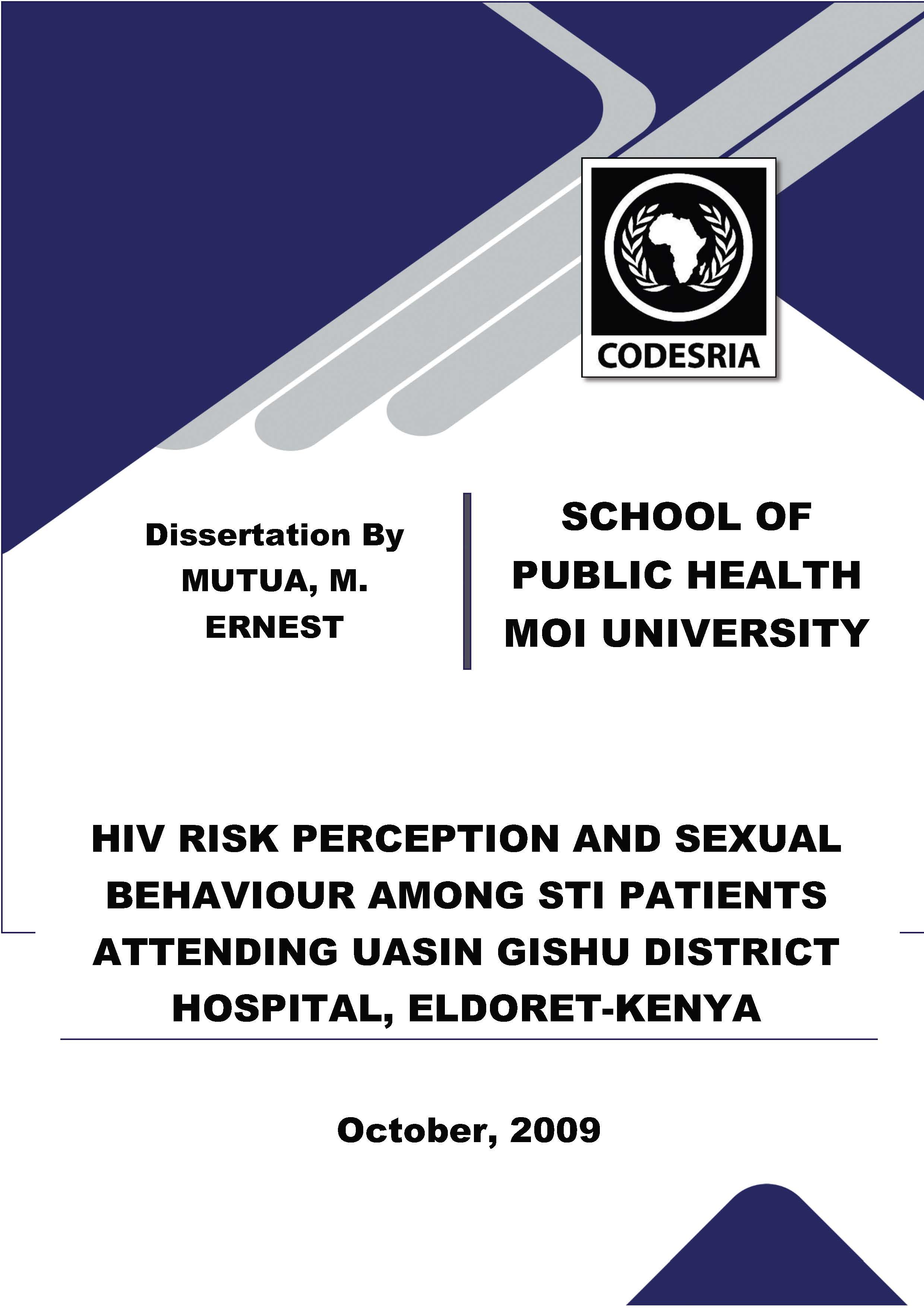HIV RISK PERCEPTION AND SEXUAL BEHAVIOUR AMONG STI PATIENTS ATTENDING UASIN GISHU DISTRICT HOSPITAL, ELDORET-KENYA
Keywords:
SEXUAL BEHAVIOUR, STI PATIENTS, HOSPITAL, KENYASynopsis
Globally, Acquired Immunodeficiency Syndrome (AIDS) has killed more than 25 million people since it was first recognized in 1981, making it one of the most destructive epidemics in recorded history (UNAIDS/WHO, 2005). Despite recent improved access to antiretroviral treatment and care in many regions of the world, the AIDS epidemic claimed 3.1 million [2.8–3.6 million] lives in 2005; more than half a million (570 000) were children. The total number of people living with the human immunodeficiency virus (HIV) reached its highest level: an estimated 40.3 million [36.7–45.3 million] people are now living with HIV. Close to 5 million people were newly infected with the virus in 2005 (UNAIDS/WHO, 2005).
Downloads
References
Adih WK. and Alexander CS. (1999). Determinants of condom use to prevent HIV infection among youth in Ghana, Journal of Adolescent Health, 24 (1):63–72.
Akande A. (1994). AIDS-related beliefs and behaviours of students: evidence from two countries (Zimbabwe and Nigeria), International Journal of Adolescence and Youth, 4(3–4):285–303
Akwara PA., Madise NJ. and Hinde A. (2003). Perception of risk of HIV/AIDS and sexual behaviour in Kenya, Journal of Biosocial Science. 35(3):385–411.
BSS (2002). HIV/AIDS and sexually transmitted infections in Kenya.
Catania J., Kegeles S. and Coates T. (1990). Towards an understanding of risk behavior: an AIDS Risk Reduction Model (ARRM). Health Education Quarterly, 17 (1):53-72.
CDC (2002). Male Latex Condoms and Sexually Transmitted Diseases. Atlanta, GA
Central statistical office (Zimbabwe) & macro international (1995). Demographic and Health Survey, 1994. Central Statistical Office, Harare.
Coates TJ. and Choi KH. (1996). Designing behavioural and social science research and impact practice and policy in HIV prevention and care. Int J STD and AIDS;7(Suppl.2):212
Mwaluko G., Urassa M., Isingo R., Zaba B. and Boerma JT. (2003) Trends in HIV and sexual behaviour in a longitudinal study in a rural population in Tanzania 1994–2000. AIDS, 17(18):2645-26
National AIDS Control Council (2005). Kenya HIV/AIDS data booklet, Nairobi.
NASCOP (2005). AIDS in Kenya, 7th edition. Ministry of Health. Nairobi, Kenya Ndola P., Leo M., Elizio M., Farnaz V. and Mark S. (2006). Relationship between HIV Risk Perception and Condom Use: Evidence from a Population-Based Survey in Mozambique. International Family Planning Perspectives, 32:4
Nzioka, C. (1996). Lay perceptions of risk of HIV infection and the social construction of safer sex: some experiences from Kenya. AIDS Care 8, 565–579
Ondimu K. (2005). Risky Sexual Behaviours among Migrant Tea Workers in Kenya:. OSSREA, Ethiopia North American Distribution 144 pp
Philippe M. and Duncan M.(2001). Interventions against sexually transmitted infections (STI) to prevent HIV infection.British Medical Bulletin 58:129-153
Rosenstock I., Strecher V., and Becker M. (1994). The Health Belief Model and HIV risk behavior change. In R.J. DiClemente, and J.L. Peterson (Eds.), Preventing AIDS: Theories and Methods of Behavioral Interventions (pp. 5-24). New York: Plenum Press.
Stephen B., Stephen R., Warren S., Deborah G., Norman H., and Thomas B., (2001).Designing Clinical Research. Second edition (Page30-31) UNAIDS/WHO (2005). AIDS epidemic update.
Geneva, Switzerland.
Wasserheit JN. (1992). Epidemiologic synergy: Interrelationships between human immunodeficiency virus infection and other sexually transmitted diseases. Sexually Transmitted Diseases 9:61-77.
WHO (2005). Integrating STI/RTI care for reproductive health: a guide to essential practice. Geneva, Switzerland
WHO (1999). Sexually Transmitted Infections Prevalence Study Methodology. Geneva, Switzerland.
Wolf B. and Blanc A. (2000). The role of HIV risk perception on sexual negotiation and condom use among stable unions in high and low risk settings in Uganda.






